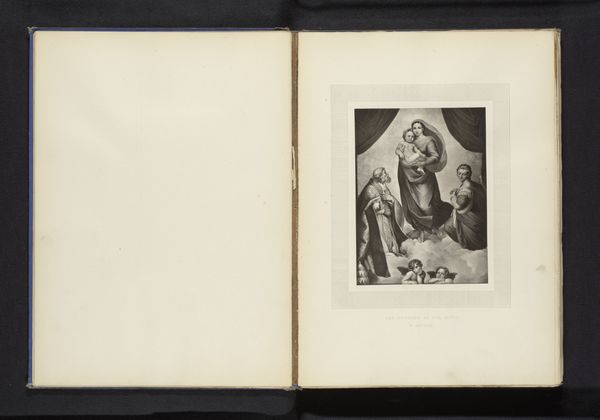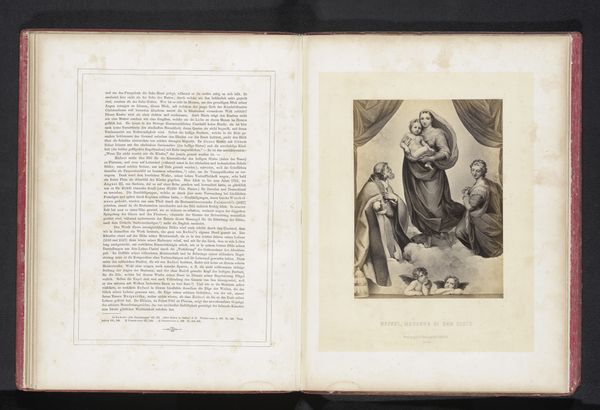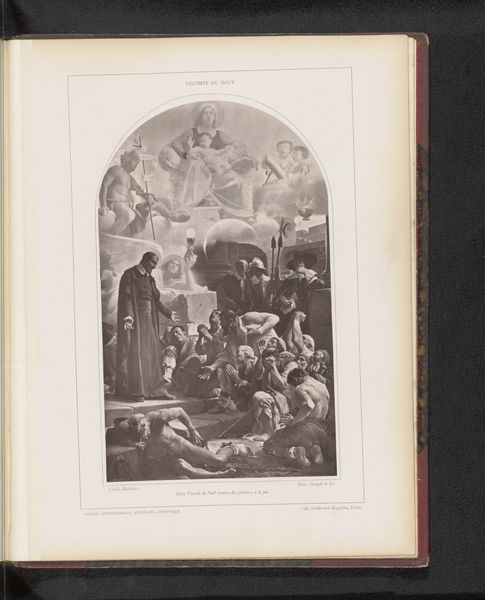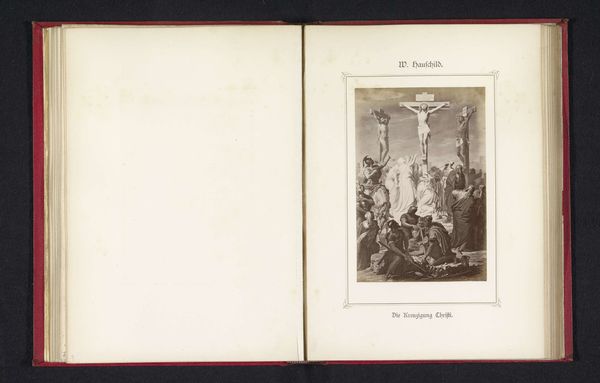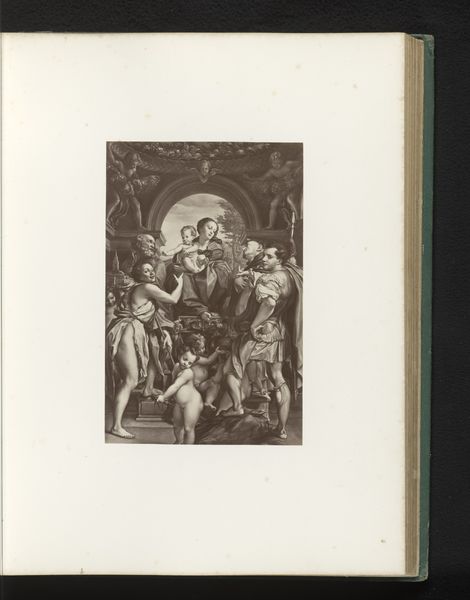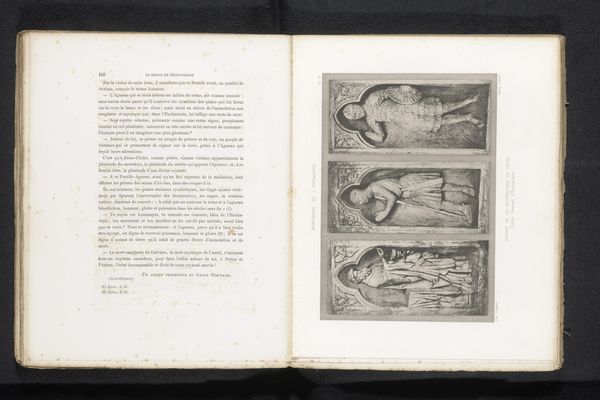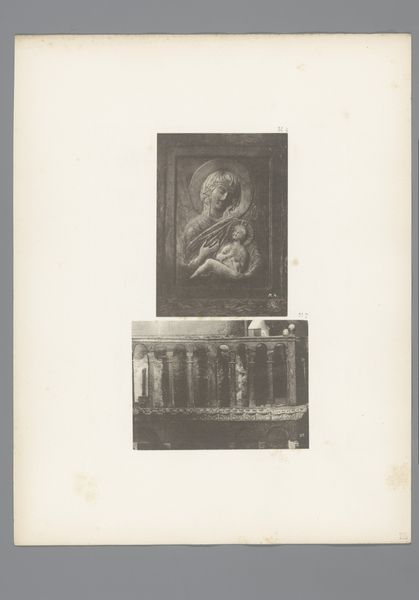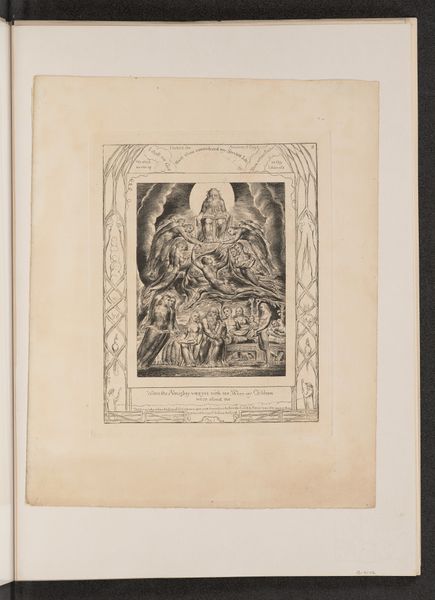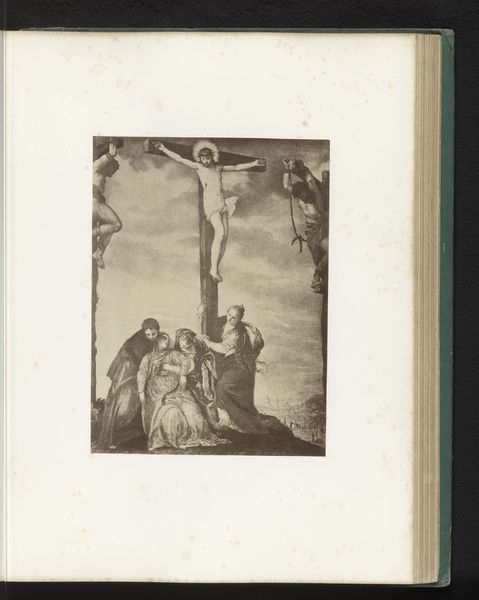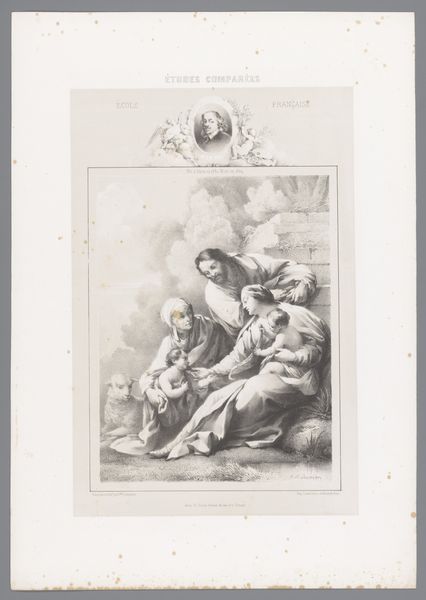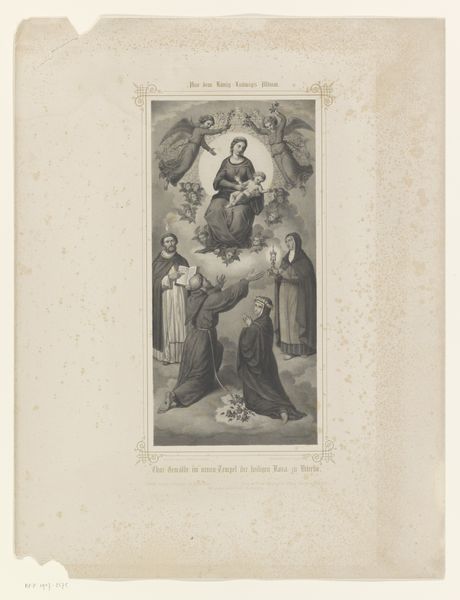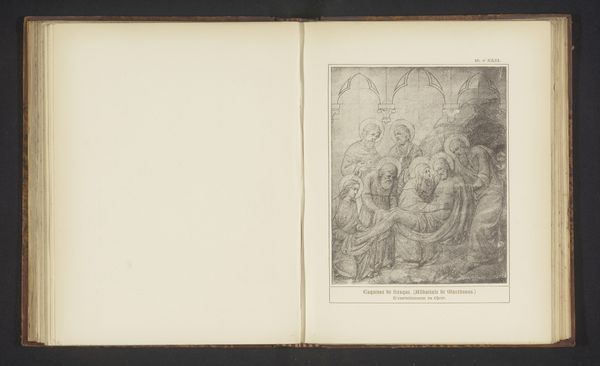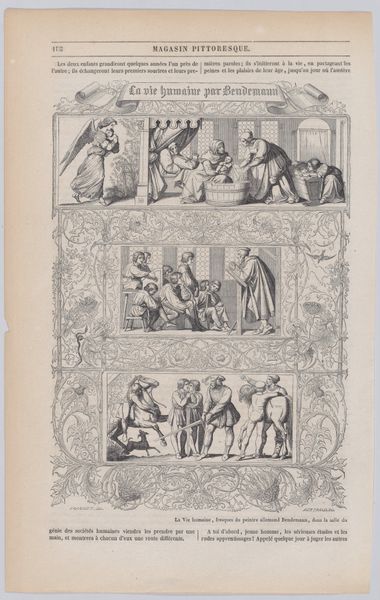
print, etching, paper, engraving
#
portrait
#
high-renaissance
# print
#
etching
#
figuration
#
paper
#
11_renaissance
#
coloured pencil
#
engraving
Dimensions: height 265 mm, width 192 mm
Copyright: Rijks Museum: Open Domain
Editor: Here we have a reproduction of Raphael's "Sistine Madonna," made before 1895 by E. Albert & Co. It's an etching and engraving on paper. The scene, though familiar, feels weighty and dramatic. What are your thoughts on this piece? Curator: This reproduction allows us to consider how iconic religious imagery, particularly that of the Madonna, was disseminated and consumed in the late 19th century. The reproduction itself is a statement. Prints like these made art accessible to a wider public, bringing high Renaissance ideals into middle-class homes. Notice how the etching mimics the style of the original painting; what impact do you think this accessibility has on art's role within society? Editor: It makes it more democratic, maybe? Everyone can have a 'Raphael' at home. Does that cheapen the original somehow? Curator: That’s a question people grappled with then as now. While some worried about diluting the aura of the original masterpiece, others saw reproductions as a powerful tool for education and cultural elevation. Think about the institutions that showcased pieces like these. This print was part of a "Photographic Society Berlin" publication and was therefore part of photography’s project to catalogue masterpieces for circulation to those without ready access to galleries. How does seeing the original versus this copy change how you respond to the artwork? Editor: The copy is more accessible but also... flatter. Less divine, maybe because it's mass produced? Curator: Precisely. The printing process, and its association with mass culture, transforms a sacred image into a cultural artifact. Consider how this process changes our understanding of religious imagery and its role within the public sphere. Editor: So, it’s not just about the image itself, but also about *how* it reaches people? Curator: Exactly. The context of dissemination shapes meaning. By reproducing and distributing the image, figures such as Albert shaped and promoted an ideal of beauty from the High Renaissance for new viewers. Editor: I see what you mean! It really makes you think about how we experience art in different ways. Curator: And how cultural institutions shape our access to those experiences, and what that says about the distribution of knowledge and privilege.
Comments
No comments
Be the first to comment and join the conversation on the ultimate creative platform.
